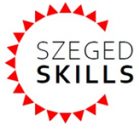Dóm tér 13.
|
Ambulance simulator; Profile Genios 906BB35 Ambulance with complete equipment without the movable platform. One of the most modern simulation conditions of the country. The ambulance is suitable for undergraduate and postgraduate medical training to practice various rescue situations, internal medicine, traumatology, various road injuries, to describe and teach basic emergency diseases. Electronic devices in the ambulance: Lifepak 15 defibrillator MEDUMAT Transport - WeinMann respirator OB 2012 FA Boscarol - extractor Alaris GH PLUS syringe pump |
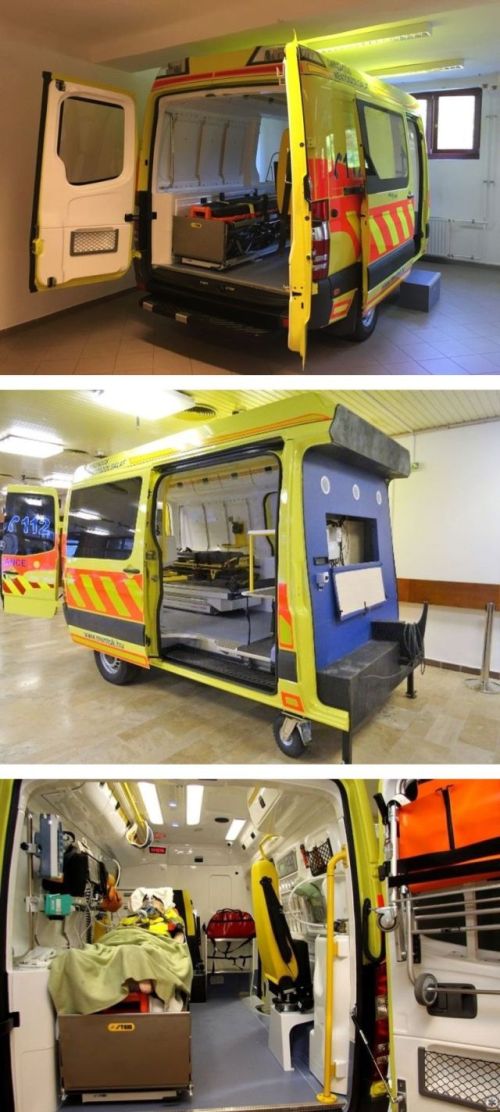
|
|
LIFEPAK 15 monitor/defibrillator
A device that is suitable for all tasks in acute cardiology care. Developed to perform basic life support (BLS) and advanced life support (ALS) protocols to support vital functions. |
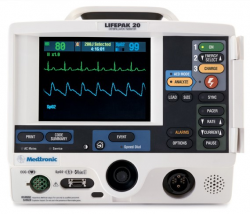 |
|
MEDUMAT Transport Ventilator The ventilator from WEINMANN Emergency covers a wide spectrum of applications from primary deployment to intensive-care transport and, thanks to its hygiene input filter, is even suitable for contamination transport. Despite this, it is still simply and intuitively operated: MEDUMAT Transport helps in an emergency to start the therapy as quickly as possible - thanks to its short start-up time and ventilation pre-settings based on emergency modes or the input of the patient´s gender and height. For intensive-care transport, MEDUMAT Transport can be preconfigured according to your needs and ventilation can be adjusted to match the respective patient: The varied functions for differentiated ventilation can be easily operated by means of the clear menu assistance. |
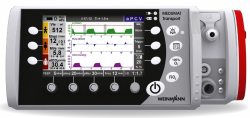
|
|
Boscarol OB 2012 FA White Medical Suction Unit The OB 2012 is a portable medical exudate device for removing fluids and substances that can clog the upper airways and thereby restoring natural and / or artificial respiration. High vacuum is usually for suction of the mouth and throat and low vacuum is for suction of the trachea and / or in children and infants. The device can be used in emergency healthcare, service, first aid, home care, and in hospitals and / or mobile medical units. |
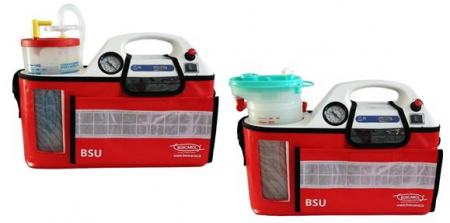
|
|
Alaris PK Plus Syringe Pump MK4 The Alaris PK Plus Syringe Pump provides the user with an infusion tool for the administration of drugs for anaesthesia. The embedded software within the Pump is loaded with three compartment pharmacokinetic predictive models and has 4 modes of operation: 1. Continuous infulsion (ml/h) 2. Total Intravenous Anaesthesia (TIVA) mode
3. Total Intravenous Anaesthesia (TIVA) with TCI predictions mode.
4. TCI Mode
The Alaris PK Plus Syringe Pump has a user friendly interface that displays the infusion rate, the total drug dose delivered, and the estimated plasma and effect-site concentrations to enable the user to follow the drug prescription information from the relevant country. |
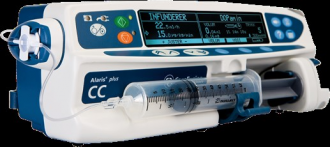
|
Adult simulation practice room |
|
|
CAE iSTAN Patient Simulator iStan is the most advanced wireless patient simulator on the market, with excellent articulation and full mobile capabilities. Modeled, integrated physiology allows instructors to launch a simulation with two clicks, or to program an unlimited number of patient states and scenarios for advanced practice. FEATURES INCLUDE:
|
 |
Pediatric simulation practice room |
|
|
PediaSIM Pediatric Patient Simulator CAE PediaSim HPS is the top-of-the-range, fully automatic, high-fidelity paediatric human patient simulator (PHPS) representing a six year old, specifically designed for training in anaesthesia, respiratory medicine and critical care nursing. FEATURES INCLUDE:
|
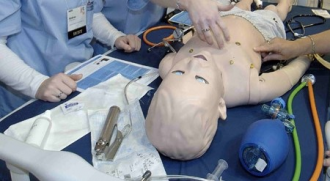 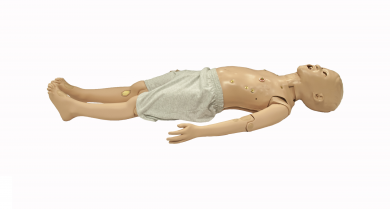
|
|
Life/form® Infant IV Arm The Life/form IV Training Arm consists in a special, extremely thin, synthetic skin, and rubber tubing with appropriately small lumen and thin walls. The cephalic and basilic vein are accessible, as well as the dorsal venous arch on the hand. The Life/form IV Training Arm Includes:
|
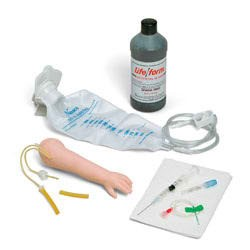
|
|
Life/form® Infant IV Leg A special, extremely thin, synthetic skin is paired with rubber tubing featuring a small lumen and thin walls. The greater and lesser saphenous veins are accessible, as well as the dorsal venous arch on the foot. Comes with two IV bags with clamps, one pint Life/form® blood, one 3 cc syringe, one 22-gauge needle, and winged infusion set. Fluid stand not included. The Life/form IV Training Leg Includes:
|
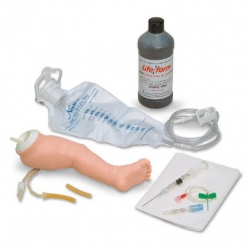
|
|
Life/form® Pediatric Injection Arm Exact reproduction of the arm of a six-year-old child. The Life/form Injection Arm Includes:
|
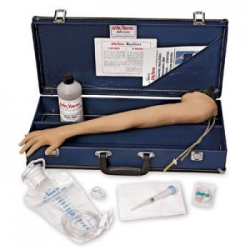
|
General practice room |
|
|
SimMan 3G Trauma Simulator SimMan 3G Trauma is specifically designed for military and civilian emergency services to simulate the treatment of a trauma patient.
SimMan 3G Trauma is well suited for training in:
The durable design, together with specifically selected features, such as amputated limbs and sternal IO access, make it possible for learners to fully immerse themselves in the simulated scenarios.
|
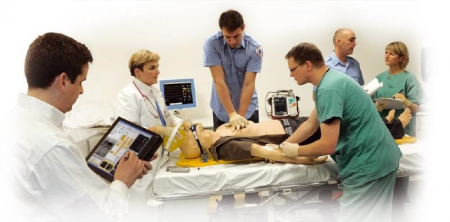
|
|
GI-BRONCH™ Mentor The innovative GI-BRONCH Mentor™ platform allows for GI endoscopy and flexible bronchoscopy training alike, using authentic scopes and an adjustable 24” touch screen. The GI Mentor’s unique training system combines designated hardware and software to create a true-to-life sensation, including original Colonoscope and Duodenoscope, and physical master tool and guidewires to simulate a variety of endoscopic tools. Upper and lower GI cases are conveniently alternated, offering a comprehensive environment for gastrointestinal endoscopic hands-on training. |
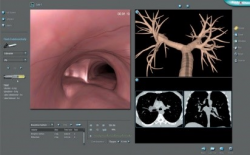 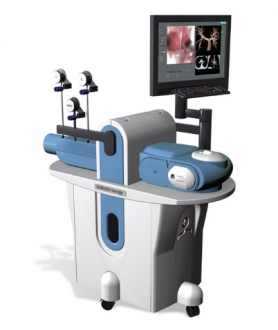
|
|
Auscultatios models
|
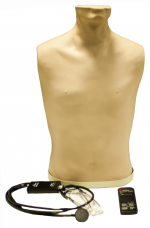 |
|
CathSim intravenous injection simulator
|
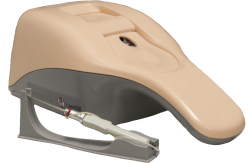
|
|
Laerdal® Airway Management Trainer Realistic practice is the key to developing proficiency in airway management skills. The Laerdal Airway Management Trainer’s lifelike upper torso and head simulates real-world complications when practicing a variety of intubation, ventilation, and suction techniques.
Product features: |
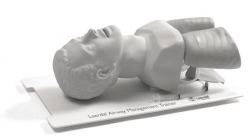 |
Ambu® Airway Management Trainer
The Ambu Airway Management Trainer is for teaching Intubation techniques with all known tubes and supraglottic airway devices. Features:
|
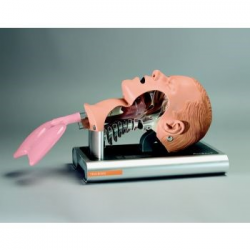 |
Seminar room 2A
|
|
|
LIFEPAK 20e defibrillator/monitor
An ideal crash cart device, the 20e puts early, effective defibrillation into the hands of first responders. The unit features a highly intuitive design with a “closed door” system. When the door is closed, the unit is in AED mode, which ensures that basic responders are presented only with the controls they need for fast, easy operation. In addition, the proven Shock Advisory System™ features loud voice prompts and clear, simple graphics to guide responders through the 3-step operation. Throughout the process, CODE-SUMMARY™ critical event record captures critical moments from the instant the unit is switched on, including cardiorespiratory events, a vital signs log and the associated waveforms.
|
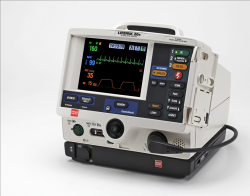 |
|
HeartSine Samaritan PAD 500P Semi Automatic AED Defibrillator The easy-to-use samaritan® PAD Trainer with remote control guides users through simulated analysis, energy delivery and prompted Cardio Pulmonary Resuscitation (CPR) intervals with the look and feel of a live samaritan Public Access Defibrillator (PAD) without the actual charge and discharge of an electrical shock. The design of the samaritan® PAD Trainer mirrors the live device in order to ensure greater user retention and system familiarity. As such, the PAD Trainer is easy to use, allowing the trainer the maximum time possible to focus on the learning needs of the group. The Trainer, which is compatible with any CPR manikin system, provides six pre-recorded rescue training scenarios without delivering an actual shock. |
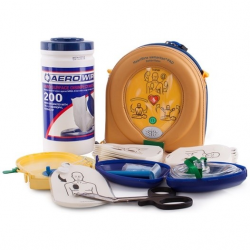
|
|
ALSi – The Advanced Patient Condition Simulation for ALS by iSimulate Using just 2 tablets, the lightness and simplicity of ALSi makes it ideal for in-situ training. ALSi gives facilitators a great tool for training and students an incredibly realistic platform to learn from. ALSi offers medical simulation as you've never seen it before, built off technology you use every day. Features of ALSi Patient Condition Simulator:
|
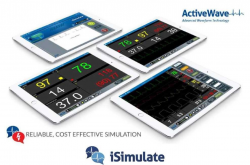 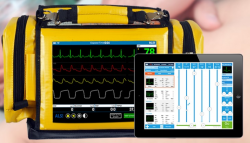
|
|
Ambu® SAM
Key Features:
|
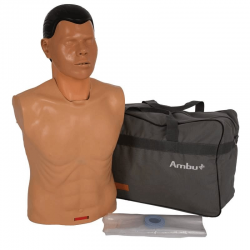 |
|
Ambu Man Torso (Model I and W) The Ambu Man W (Wireless) does not need cables and wires, which means it can be placed in realistic surroundings away from the computers and power supplies. This gives a great amount of freedom during training and because there are no wires or cables lying around it gives an even more realistic scenario. The manikin is also equipped with a mechanical monitoring instrument showing effectiveness of the resuscitation, including results achieved for ventilation volume and depth of external chest compression. Moreover, it indicates any stomach inflation and incorrect hand positioning. The Ambu Man I (Instrument) models are equipped only with a mechanical monitoring instrument showing effectiveness of the resuscitation, including results achieved for ventilation volume and depth of external chest compression. Moreover, it indicates any stomach inflation and incorrect hand positioning. The airway of all manikins open only when the head is correctly hyper extended. A carotid pulse can be activated manually by the instructor. It is also activated during chest compressions. The lifelike anatomy makes it suitable for training a correct placement of defib pads in training use of Automatic External Defibrillators (AED). |
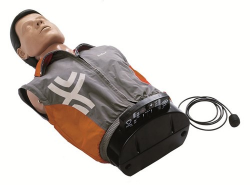
|
|
Ambu® Man Defib - Next Generation
The Ambu Man Defib combines the basic function of Ambu Man Wireless with the additional option for early defibrillation. The Ambu Man Defib Wireless is equipped with the proven and patented Ambu hygienic system to avoid cross-contamination.
Ambu Manikin Management Modules -
Defibrillation and ECG -
Monitoring instrument -
Carotispulse -
Key Features:
|
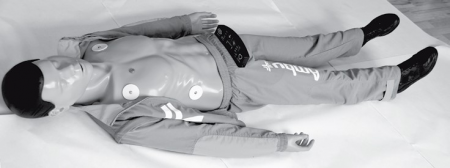
|
|
Ambu Man Advanced IV The AmbuMan Advanced is Ambus latest training manikin generation, which is made to fulfill all the needs of Advanced Life Support (ALS) - Training. The focus of the manikins is on the algorithm: Airway management, ECG simulation, defibrillation and the training of I.V. and I.O. access techniques. The core is the AmbuMan with the latest, integrated Ambu Wireless Technology. The browser-based Ambu Manikin management Module allows the wireless control, documentation and monitoring of the performance of the trainees. The Ambu Manikin Management Module is the central interface, where all data and information come together: compression depth, correct hand position, ventilation volume stomach inflation. Using AmbuMan Advanced, you can create custom scenarios and adapt them perfectly to different course concepts. The AmbuMan Advanced is the ALS training manikin for professionals. Customized Scenario Training:
New Level of debriefing
Key Features:
|
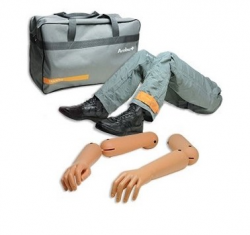 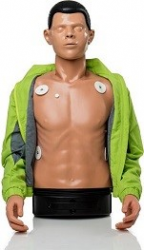 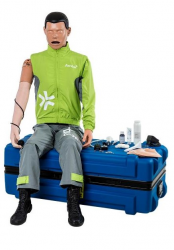
|
|
|
|
Seminar room 2B |
|
|
Lumbar Puncture Simulator This Lumbar Puncture Simulator has been designed by medical education experts to enhance formal LP procedural skills training and assessment. It allows students and medical professionals to practice frequently and achieve high levels of procedural competence without placing any patients at risk of harm. Features:
|
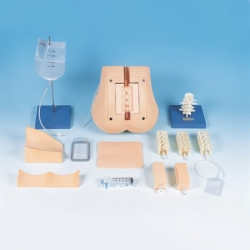 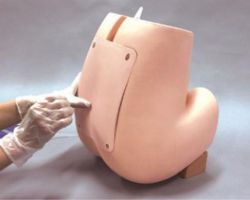
|
|
Life/form® Spinal Injection Simulator Realistic anatomy, including:
5 approaches:
Realistic resistance and natural “give” as the spinal needle is advanced slowly into the proper space.
Fluid that flows when the needle is in proper position.
Ability to position in sitting or lateral positions.
Capability to prepare students for:
|
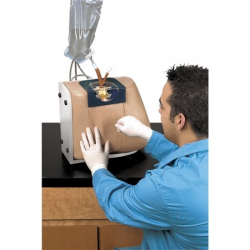
|
|
Multipurpose Injection Training Arm The following four injection techniques can be practiced with one model:
Realistic appearance is very similar to that of real human skin.
Moveable shoulder and elbow simulate each injection position.
The skin is very durable and needle holes do not remain visible on it.
Injection site, blood vessel tube and skin are easily replaced.
|
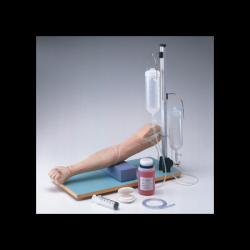 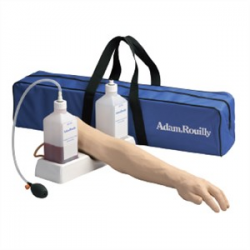
|
|
|
|
|
Cricoid stick Trainer Needle and surgical cricothyrotomy skills can be practiced on this model with interchangeable rigid and soft tracheas.
|
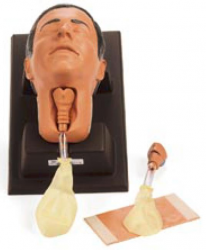 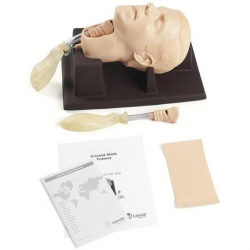
|
|
Thoracic Trauma Trainer LM-093 High-energy trauma often consists of multiple injuries, and thoracic trauma can be considered key when determining priority in treatment. This thoracic trauma trainer is a model that combines practice in surgically securing the airway with practice in the treatment of obstructive shock. Features:
|
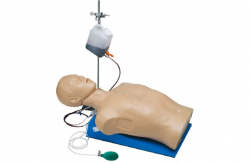 |
|
Pneumothorax Trainer Lifelike manikin simulating a male upper torso designed for training in the practice of tension pneumothorax decompression at the bilateral midaxillary and bilateral midclavicular sites. A bladder replacement kit containing midaxillary and midclavicular bladders and modeling wax to repair needle sticks in the pads is included. |
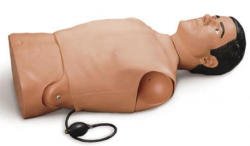
|
Seminar room 1 |
|
|
Ambu® Baby Manikin, Ambu A/S Like all Ambu BLS manikins the Ambu Baby has the patented hygienic system that eliminates the risk of cross infections. All trainees receive their own face piece and head bag for the training. At the end of the training the face piece can be cleaned and the head back is discarded. A truly 100% hygienic way of training. Just as in real life the airway open only when the head is properly moved into the sniff position. The instructor can simulate obstruction of the airway by an on/off slider. The Ambu baby has additional features like a realistic brachial pulse to provide a correct and realistic training. Stomach ventilation can further be checked visually. |
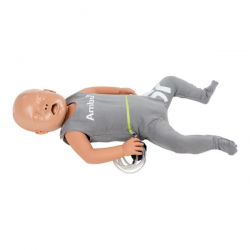 |
|
AirSim Child X Pediatric Training Manikin for Endotracheal Intubation
Model Features:
Medical Procedure Training -
|
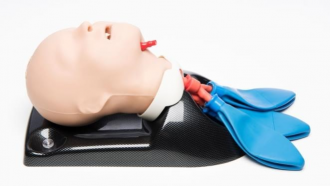
|
|
The Hungry Manikin® - Paediatric Nasogastric Feeding Trainer This model was designed by nutrition nurses at Birmingham Children’s Hospital to demonstrate to parents/carers the technique for inserting nasogastric and gastrostomy tubes in children. This simple to use simulator helps identify the stages of placement, ensuring that the nasogastric device is passed safely and correctly. This child manikin enables parents/carers to visualise the correct positioning of nasogastric and gastrostomy tubes and also practise the associated techniques. Families have reported that The Hungry Manikin gave them invaluable practice and increased their confidence and understanding. Measurement, placement and securement of nasogastric tube. Insertion of gastrostomy tube -
Features:
|
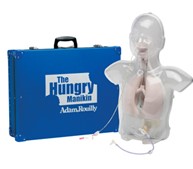
|
|
|
|
|
Simulaids® Pediatric ALS Trainer Complete with Arrhythmia Simulator Features include bag valve mask ventilation, intubation head, oral or nasal intubation, Sellick’s Maneuver, accepts NG tube, four lead monitoring, brachial pulse, external chest compressions, jaw thrust, IV sites in hand and arm, two I/O legs for intraosseous needle insertion and aspiration of bone marrow, scalp vein for palpation, cranial sutures, and fontanels. With an external pacer, you can simulate electronic capture. You can also simulate cardioversion with manual, semiautomatic, or automatic defibrillation. |
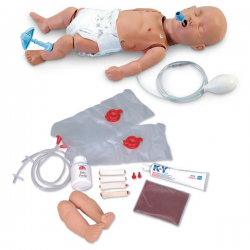 |
|
Intraosseous Infusion Simulator- Nasco / Life/Form® The Life/form® Intraosseous Infusion Simulator is a dramatic and exciting training aid designed to demonstrate and simulate the intraosseous infusion procedure. Students will be able to learn and practice, with incredible accuracy and realism, a procedure which has been difficult to simulate in the past. Prior to the Intraosseous Infusion Simulator, educators resorted to unsanitary chicken and turkey bones. PALS programs will find this teaching aid a convenient and sanitary alternative. This simulator is also very cost-effective due to replacement bones and skins which extend the life of the simulator indefinitely. Use a 15-gauge needle during simulation. The bones used in the model have been designed with four sides, each side having the ability to be punctured several times. In addition, three palpable landmarks, including patella, tibia, and tibial tuberosity are located in both legs. Both legs have also been designed so that aspiration is possible. Life/form® Intraosseous Infusion Simulator represents a six-month-old infant. |
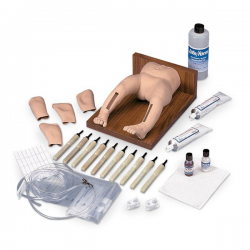 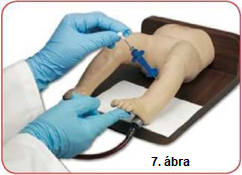
|
|
Neonatal Resuscitation Model LM-089 This model is for practicing cardiopulmonary resuscitation for a neonatal baby. It is suitable for practical training and the basic handling of a neonatal baby. It can be used for neonatal cardiopulmonary programs (NCPR), neonatal resuscitation programs (NPR) and various courses. Features:
|
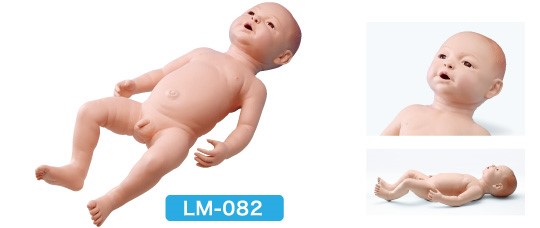 |
|
Advanced Male Catheterisation Trainer Advanced Male Catheterisation Trainer with suprapubic site and bung. Skills:
Features:
|
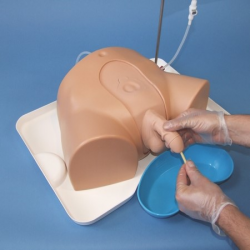 |
|
Advanced Female Catheterisation Trainer Advanced Female Catheterisation Trainer with suprapubic site and bung. Skills:
Features:
|
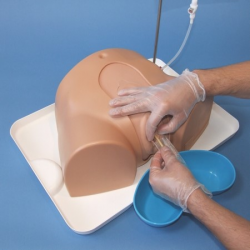
|
|
ENEMA Training Manikin / Pelvis Outline Feces removal and glycerin enema in the field of nursing and welfare education can be practiced with the same feeling as with a human body. The trainer can provide exact instructions while observing trainee's technique. Feces Removal This model simulates bedridden patients or the aged who are having difficulty eliminating waste by themselves, and removal of simulated feces in the rectum can be practiced by digital insertion. The trainee inserts the attached simulated feces into the intestines and removes it from the anus with proper Glycerin Enema. A Glycerin Enema can be practiced simulating bedridden or the aged patients who are unable to evacuate the bowels by themselves. Glycerin fluid can be injected. (It is let out from a drainage tube at the side of abdomen.) By opening the abdominal cover, the position of the enemator's end can be confirmed through transparent intestines and this makes possible safe glycerin enema training and guidance.technique. |
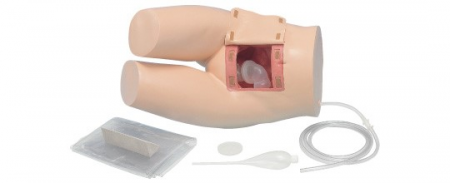
|
|
Advanced Rectal and Prostate Examination Simulator This simulator is a realistic representation of the buttocks, anus and rectum, for the practice and training of skills and diagnosis associated with rectal examination. In addition to the buttock, it also has an additional perineum for rectal examination with two rectal pathologies.
Features:
|
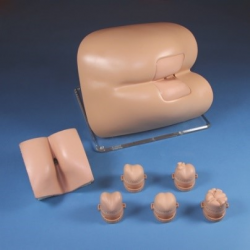
|
Albert Szent-Györgyi Medical School
Clinical Skills Centre

